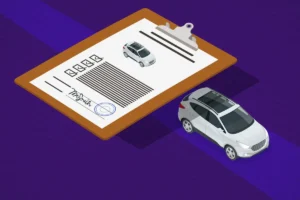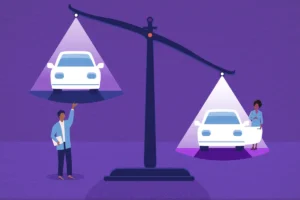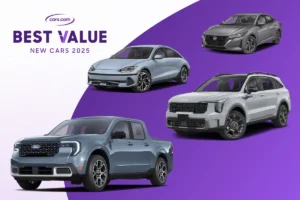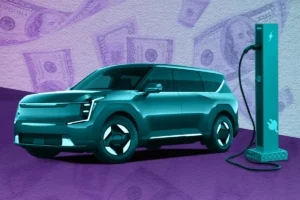What to Know Before Purchasing an Electric Vehicle: A Buying Guide
We’ve bought numerous electric vehicles over the years, tested many back to back and spent more hours charging in grocery store parking lots than we care to admit. That’s why we put together this buying guide to help you determine how to choose the best EV, and we are also sharing our Top Picks, which we think are the best EVs in their class.
If you’re reading this prior to Sept. 30, 2025, you need to make your purchase or lease ASAP because that’s when the $7,500 federal tax credit expires. Our advice below still applies regardless of your purchase date, however. Compared with a gas-powered car, you’ll have to consider how far you can travel before needing to recharge, as well as how to “refuel” an EV, including possible home improvements to support EV charging, how long it takes to charge and where to charge publicly. Not all EVs are created equal in their charging capabilities.
Related: More EV News and Testing
Electric cars can be expensive, too, as many come from luxury automakers, and those that don’t often command premium prices, though dealer or manufacturer incentives can help if the car and buyer qualify. The purpose of this buying guide is to supply you with the information to help find the best EV for you.
For those who decide an EV is the right move, we took out the guesswork by driving and testing just about every new EV out there, and our team of experts agree these are the best:
- Top Pick 2-Row SUV: 2026 Hyundai Ioniq 5
- Top Pick 3-Row SUV: 2026 Kia EV9
- Top Pick Car: 2025 Hyundai Ioniq 6
- Top Pick Luxury: 2026 Lucid Air
- Top Pick Value: 2025 Chevrolet Equinox EV
- Top Pick Truck: 2026 Chevrolet Silverado EV
How Much Range Do You Need?
It’s not hard to get 300 miles of range nowadays, but how much range you need depends on how far you drive and whether you have Level 2 home charging. You may not need as much range as you think if you can charge overnight, where you’re essentially “filling up” your car every night. However, you may need more range than you think if you live in a colder climate, don’t have home charging (which we don’t recommend) or frequently drive long distances.
- Consider how many miles you drive daily, the weather where you live, your driving style and your ability to charge an EV at home.
- There is no “magic number” for rated range.
- To prolong battery life, it’s best to charge the battery to 80%-90% and not dip below 10%, so total range can also be misleading.
Home and On-the-Road Charging Differences
We recommend EV buyers have reliable Level 2 charging at home where an EV can replenish its battery in eight to 12 hours. Charging on the road is best for longer trips or emergencies because charging times and availability can vary depending on a number of factors, though DC fast chargers can typically charge a battery from 10%-80% in about 30 minutes.
- Charging is affected by many factors, only some of which can be controlled.
- An EV cannot accept more charge than its rated charging rate; charging at a “faster” charging station may not be any faster, depending on the vehicle.
- Just plugging into a normal 120-volt home outlet may not be enough to effectively charge at home.
- Public DC fast charging is improving, especially with the increased adoption of the North American Charging Standard plug, but it can still be expensive and impact the long-term health of the battery.
How EVs Drive
Even relatively slow electric cars are quick and responsive thanks to how immediately an electric car delivers its maximum power. No surprise: They’re also very quiet to drive, though there are some peculiarities to be aware of.
- Most EVs are quicker than gas-powered vehicles with similar horsepower ratings.
- Regenerative braking, especially one-pedal driving, takes some getting used to.
- Many EVs offer all-wheel drive for an added cost but come standard with rear-wheel drive, which may be less than ideal in winter environments.
- Some EVs also offer front-wheel drive.
Electric Car Pricing
Electric car shoppers will have to be more mindful about pricing now that the federal tax credits are ending Sept. 30. While more affordable EVs are coming, most EVs have higher upfront costs than comparable gasoline-powered vehicles, though the reduced cost of gasoline and maintenance over the life of the vehicle can help even the cost.
- The least expensive EV is the 2026 Nissan Leaf.
- EVs typically have higher upfront costs than comparable gas-powered vehicles.
- Shoppers should be aware of the expiration of federal tax credits and explore available state and local incentives.
How Do You Buy an EV?
Buying an EV may be a slightly different process than you’re used to if the automaker doesn’t have dealerships like traditional automakers.
- Some EV manufacturers offer direct-to-consumer sales.
- You can purchase a Tesla, Rivian and Lucid online, taking delivery at a local showroom.
- For those that don’t offer online purchasing, the process is nearly identical to buying a gas-powered vehicle.
What About the Federal Tax Credit?
The federal tax credit has previously offered up to $7,500 off the purchase or lease of a new EV, but that tax credit is set to expire Sept. 30.
- The federal EV tax credit expires Sept. 30.
- The IRS says delivery can occur after Sept. 30, and the credit can still apply.
- You may still be able to apply state and/or local incentives after Sept. 30.
What’s Next for EVs?
On the horizon are more affordable EVs, though there are many unknowns regarding federal funding for more on-the-road DC fast chargers.
- New Nissan Leaf, Chevrolet Bolt and less expensive Rivians are coming soon.
- This is an inflection point for the EV market.
- More affordable EVs are coming, and even more would help offset the loss of federal incentives.














Post Comment